4 questions to design the best B2B website call-to-action (examples)
The simplest way to arrive at the best call-to-action for your B2B website is to ask those 4 questions. It's easier than you think with the included examples.
Written by Tomasz LisieckiGeneric call-to-actions like, “Book a call!”, “Get in touch!”, “Talk to us!”, don’t cut it. If you don’t want to sound like a bunch of attention-deprived puppies, hear me out. I promise by the end of the article, we’ll get you a B2B website call-to-action that generates MQLs for your company.
And, just to be clear, this is the button we’re talking about:
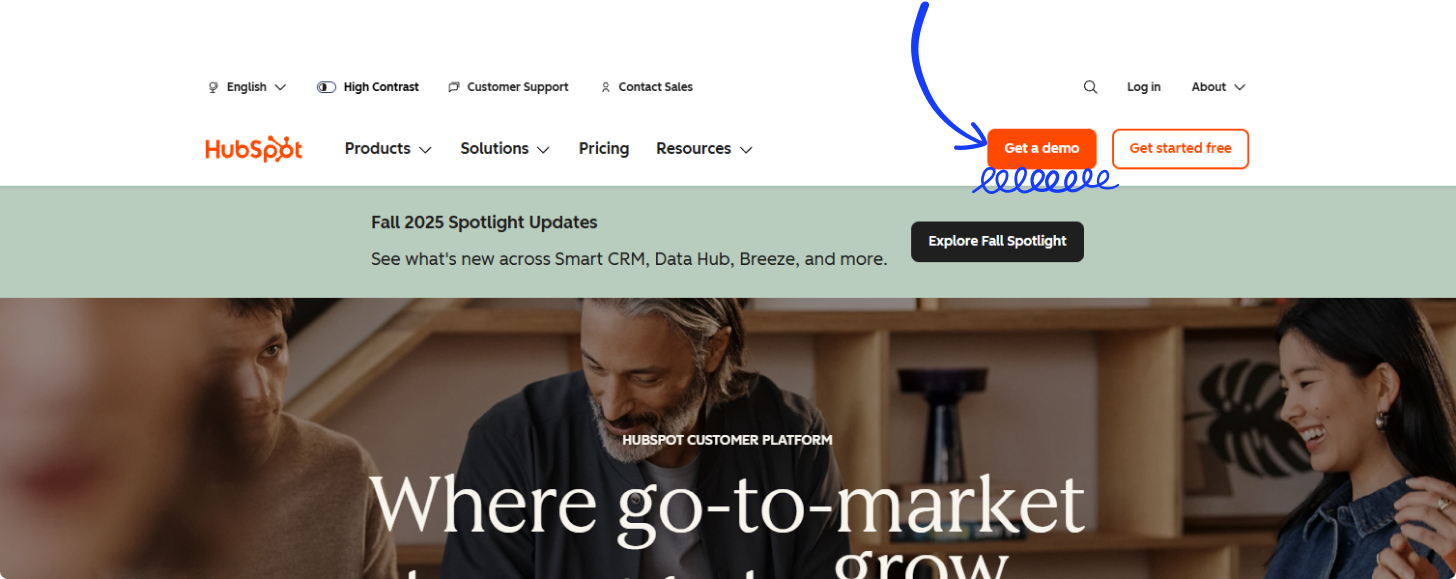
The good news is that coming up with an effective button label is easier than you think. All we have to do is understand the context in which your website exists. Your website, like any other marketing collateral, plays a role in the sales funnel.
There’s no bad news. Since you’re reading this, I can assume that your current call-to-action is not cutting it. In other words, it can’t get any worse than it is. Nice, so whatever we achieve here will be an improvement, for sure.
What does a great call-to-action look like?
A great call-to-action respects the user journey, like a door inviting them to step from one room to the next. It appreciates the effort the users have put into getting to this point and suggests the next connecting dot in the most natural way.
In other words, it’s personalised, just like the rest of your sales funnel. HubSpot analysed over 330,000 call-to-actions and concluded that smart CTAs convert 202% better than generic ones. Unbounce said that the benefit-focussed buttons boost clicks by up to 90%.
What’s the alternative to personalised call-to-actions? Generic and selfish slop. If there’s anything I learned about marketing is that the best marketing is the opposite – selfless. Remember, it’s not about what your business wants, but what your customer wants. Don’t get confused. You, as a business, exist to serve. And if you don’t believe that…
So how can you come up with the best CTA for your B2B site?
Consider the context for the B2B call-to-action on your website
Start by asking these questions:
- Who are they?
- Where did they come from?
- What do they already know?
- Where are they going?
Answering those will help us walk their shoes and suggest the most logical next step for them.
1. Who are they?
You probably came up with the answer on the spot. Or maybe you said to yourself, “it depends”. In that case, focus on a customer type that brings the most value to your business.
Doddle Logistics, one of our clients, listed 5 targeted customer types during our web design workshop. When we enquired further, they decided to group carriers and merchants and picked them as a primary focus of their website.
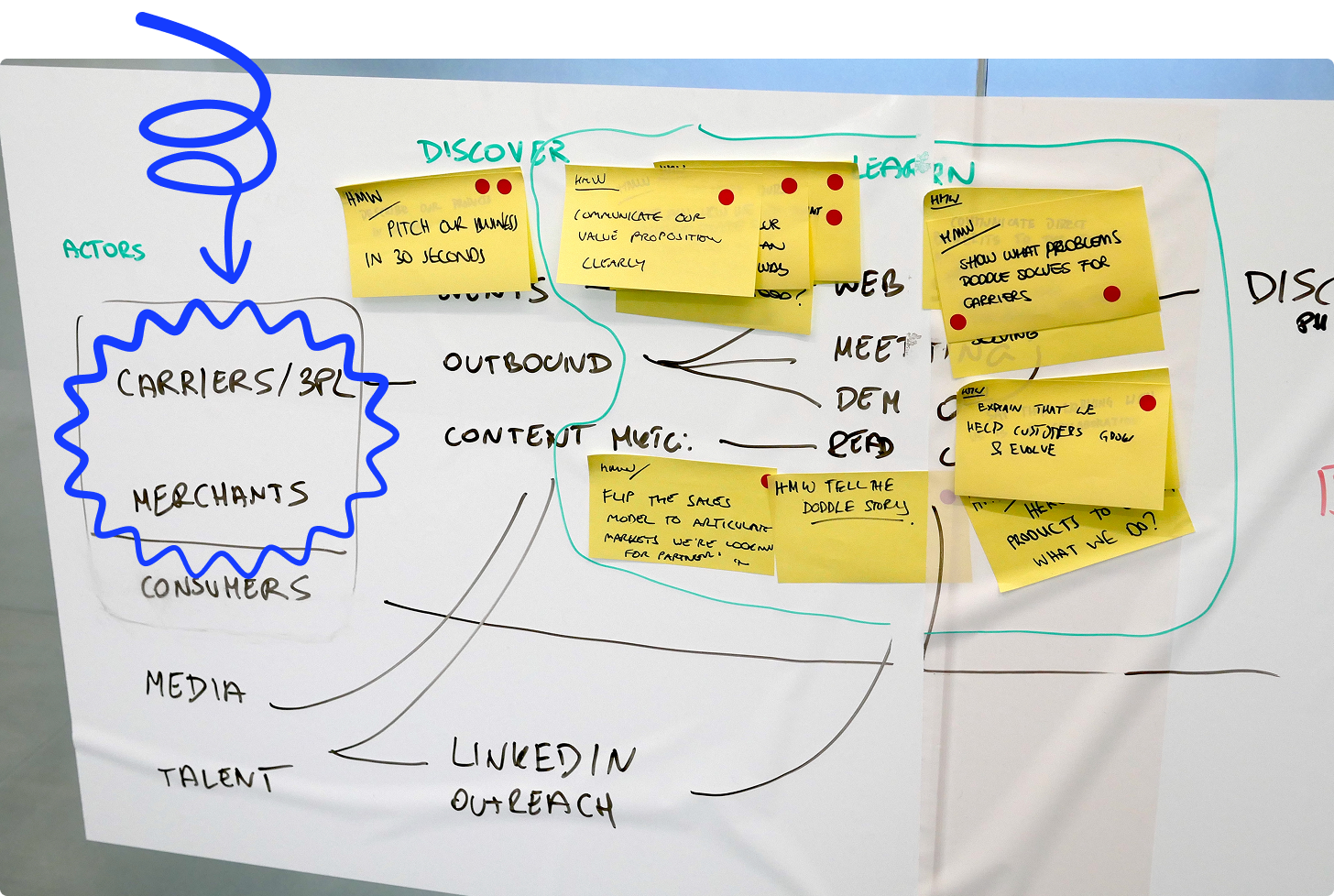
Another client, National Federation of Demolition Contractors, decided to use two audiences throughout the workshops. They needed both parties – their existing members and clients – to keep the wheel turning.
If this is you, that’s OK. It might mean you will end up with a more vague call-to-action or two accurate ones, just like our client. The more the merrier… I think?
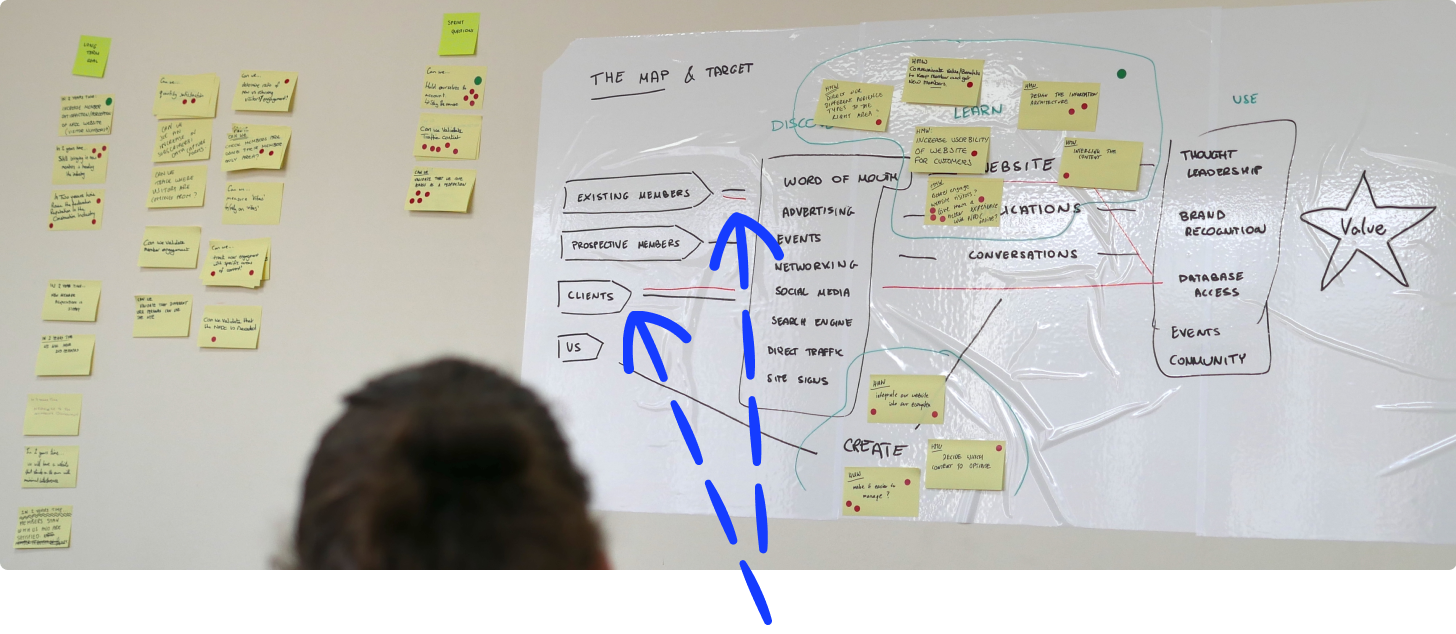
I’m choosing a head of marketing as my main audience. Who did you pick?
2. Where did they come from?
Your focussed customer type could have learned about you in many ways. It’s hard to fish out every touchpoint they had with your brand so far. But we can safely assume some things. If I was listing how prospects discover our company, I would say it’s primarily via a web search. There might be some traffic from LinkedIn, but those are very cold leads, so safe to ignore.
Do you see how I said primarily? That’s because we want to prioritise again. In my mind, people who come from the search results are already in-market for our services. Unless, you know someone who Googles “b2b saas web design agency” for fun?
Here are some examples from the Repositive team, who we designed a website for. In the “Discover” column, they listed many ways their clients find their way to their business. Do any of those apply to you? Which ones have the highest conversion rate? Pick them.
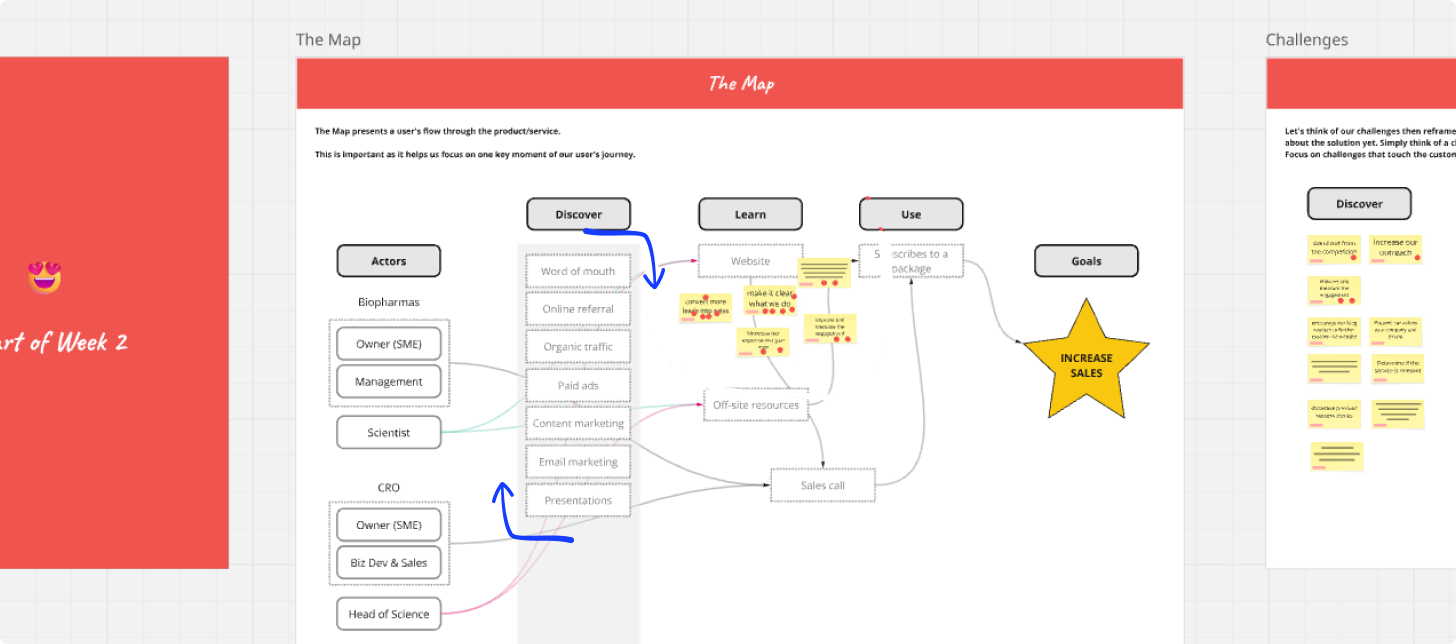
3. What do they already know?
Until we’re all connected by Neuralinks, we need to do our best to guess. People visit your website with preconceptions. They learned stuff about your business on the way here. It could be what Matt told them at that business event (who’s Matt?) or what the meta title showed him in the search results.
Every piece of information creates an image of your business that will follow the prospect around. Your call-to-action needs to respect that. It can’t be disconnected from the journey the user has been on. If they heard about you on the event, then a call-to-action reading “Talk to us” sounds a bit off.
You need to realise the value that your website content brings to the table. Your prospect will browse it to learn new facts or correct misconceptions. I’d hope that a good website does the talking for you, and the reason to reach out to your team is more purposeful.
In our case, we know that marketers come with a luggage of experiences. Their past relationships with agency didn’t end well, so they know what to avoid and what to look for. They most likely have enough of talking to agencies at this point. I can sympathise.
In our case, we know that marketers come with a luggage of experiences. Their past relationships with agency didn’t end well, so they know what to avoid and what to look for. They most likely have enough of talking to agencies at this point. I can sympathise.
4. Where are they going?
Right into our pocket. What? I didn’t say anything. Who said it?
The prospect who talked to Matt might want to visit your website to confirm the claims about the company. And if you’re selling an innovation it might be that they have never even considered a service or product like yours. That changes a lot how we approach our call-to-action.
But this question isn’t about the contents of your website. It’s about the prospect’s future. What is their personal or professional angle here? Where do they want to be in 6 months? What’s their life like before and after getting help from you? Think big about the benefit you provide.
Since we’re getting into the territory of defining a customer persona, I really liked using the B2B elements of value to understand our client needs. Also reading the StoryBrand book helped me a ton. The bottom line is that we’ve got internal and external needs. The first will come from our personal ambitions and the second from our boss. You need to tackle both.
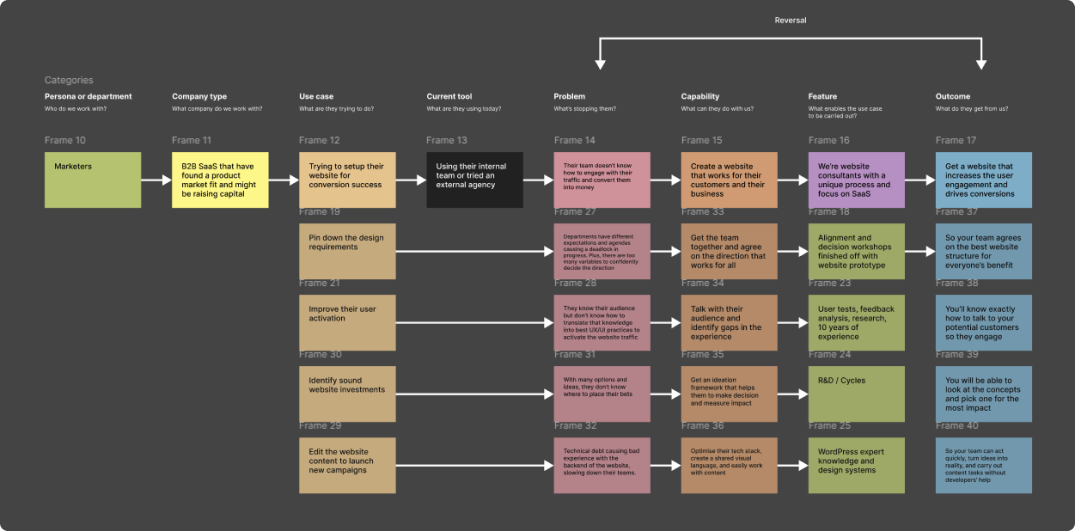
Ultimately, you can think of the main benefit your product or service offers. Our clients usually want more MQLs, so that the revenue goes up, and they get promoted for great work. What do you think your audience really wants? What’s the end game?
Bonus: What happens after they click the call to action?
This question wasn’t on the list. I sneaked that one in as a bonus homework. Because I realised something after my latest web design workshop. The disjoint between your marketing team and your sales team throws span in the works here.
In one of our workshops, the director of sales in TEG Logistics, said that a product demo never took place on the first discovery call. So, it’d be misleading for their call-to-action to promise a demo. Instead, their team offers qualifying questions, a short assessment, and the next steps. How about “Get a free strategy assessment” button, then? It matches the reality.
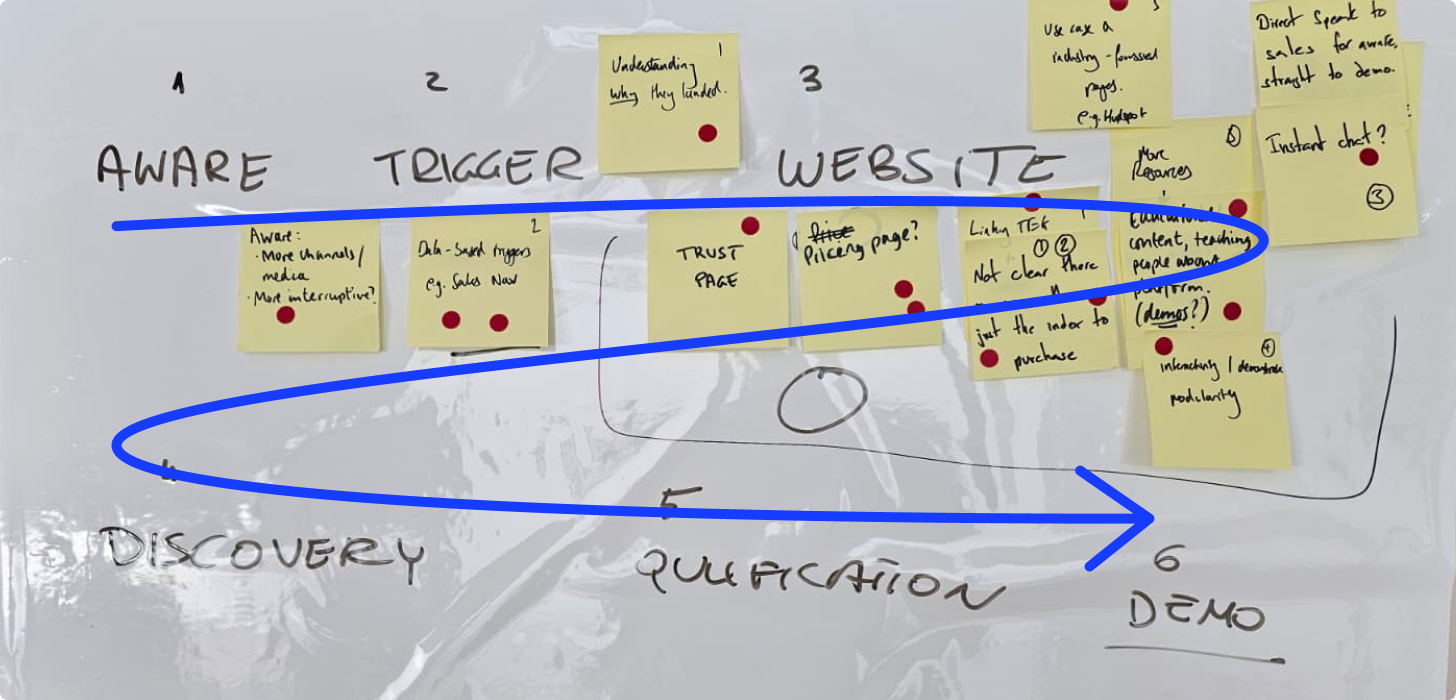
Choosing the B2B website call-to-action
But we’ve gathered here to help you choose the right call-to-action for your B2B website. Let’s recap everything we’ve done so far, throw in more examples, and work our way to the top.
Below is a table with the questions we’ve asked so far and examples to double-check if you’re on the right track.
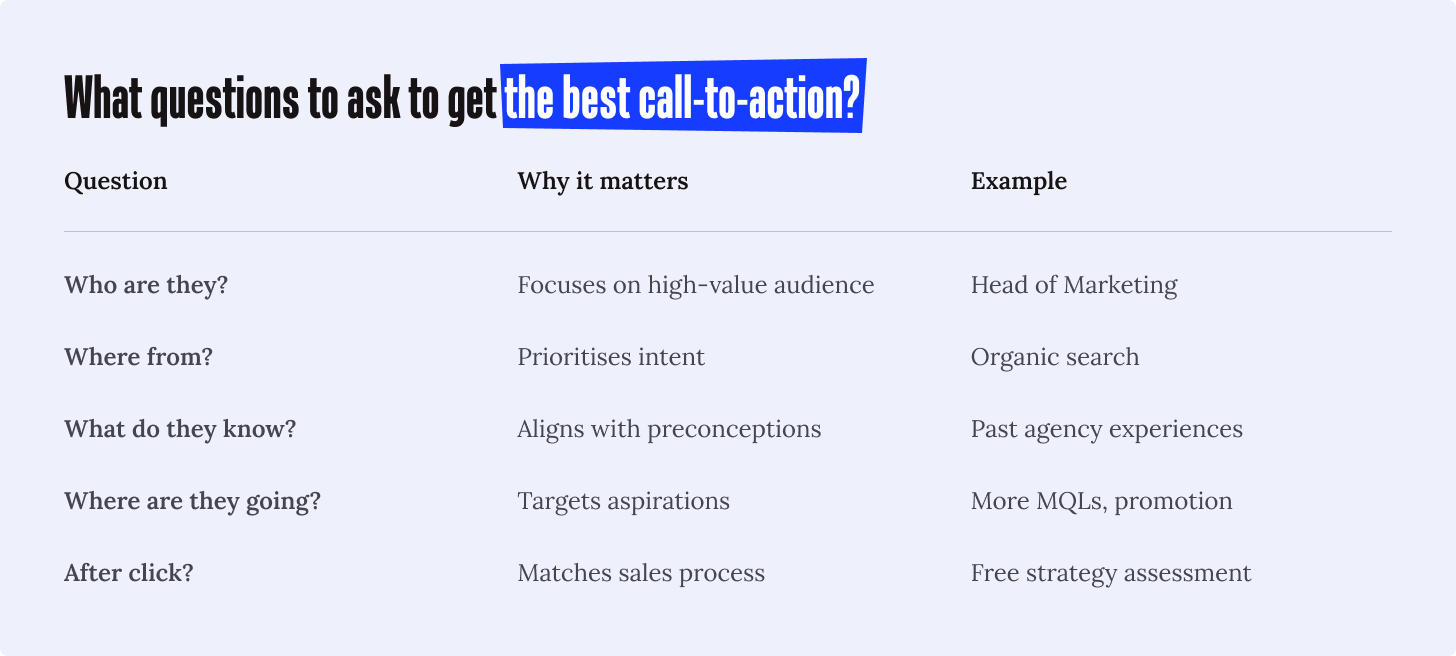
In other words, we want to identify the “before” (their current pain) and “after” (your promised value), then plug the gap. Somewhere around here…

What kind of CTA can you use to reaffirm what they know, set expectations for the sales call, and acknowledge the final destination? You see how generic phrases like “Get in touch” or “Learn more” are just not cutting it?
If you say a “discovery call”, you’ll at least give them a hint. But I think we can make it more interesting for them. Take it a notch further. What will they truly get out of those 30 minutes with your sales team? Here are a few ideas to unlock your thinking:
- Get a free quote
- Meet the team
- Start for free now
- Explore the process
- Increase MQLs today
- Unlock your growth plan
- See your ROI potential
At NerdCow, the call-to-action says “Book a process demo”, because that’s what we’re known for, the process. Everything leads to it, so it makes sense that the user would want to find a solution fit on the sales call.
Things to keep in mind for long sales cycles
If your sales cycle is long, your primary call-to-action might not be enough. There are multiple stakeholders involved in a deal. Organising a budget takes time. Comparing other options takes time. Before you know it, 3 months will be gone.
In those cases, consider throwing into the mix mid funnel call-to-actions like “Download our ROI calculator” or “Join our next SaaS growth webinar”. It might smooth things out and make things move in the right direction, without feeling too abrupt. On top of it, use tools like Google Analytics to track, which mid-funnel CTAs convert best.
A great CTA is key, but it needs a cohesive website to shine. If your site feels fragmented, book a process demo with me to see how we can streamline it and get those MQLs.
Originally published Sep 08, 2025 2:00:06 PM, updated November 4 2025.

